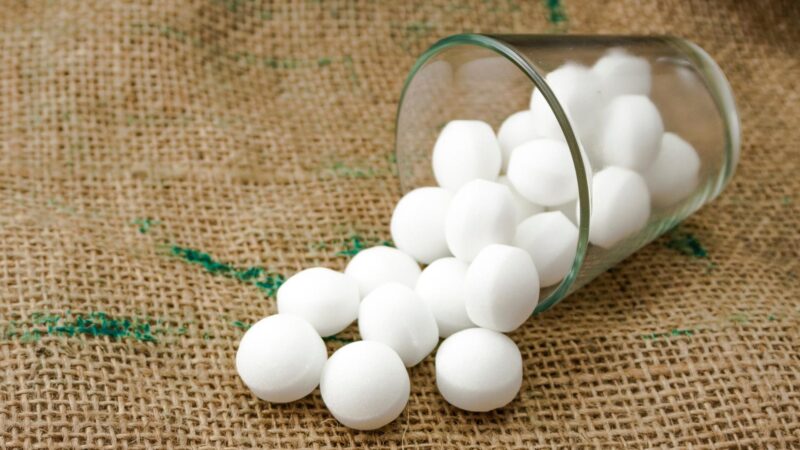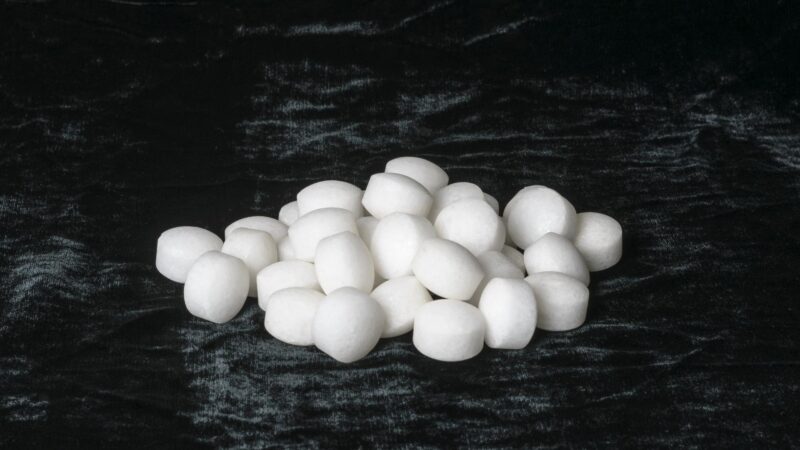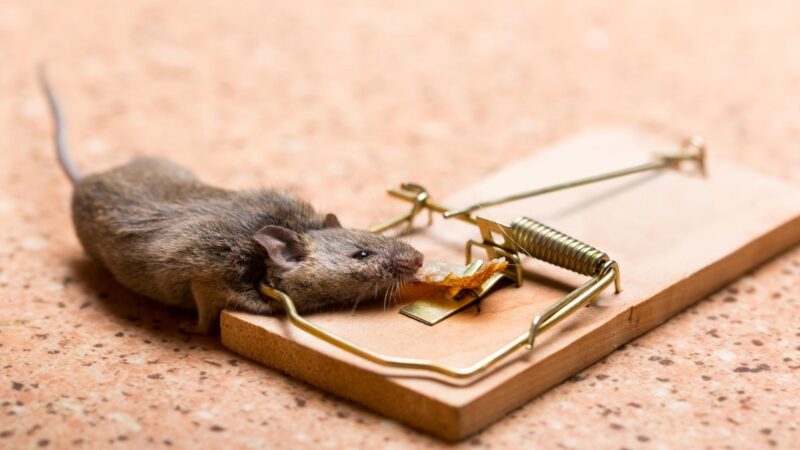Mothballs are thought to be effective rodent repellents since they contain naphthalene, a substance with a strong smell and toxic vapor. However, this is a common misconception.
Mothballs repel mice, but only in large quantities as they’re not very effective repellents. It can be used to drive mice away from specific living areas, such as attics and kitchens, or lure them away from their hiding spots, but they’re not powerful enough to get rid of them entirely.
If you want to know how to use mothballs, the dangers and disadvantages of using them, effective alternatives to mothballs, and how to naturally repel mice, this article covers that information and more!
Do Mothballs Get Rid of Mice?

Mothballs do not entirely get rid of mice. They repel them to an extent by luring them away from their current locations in your living area. However, they’re simply not potent enough to drive them away completely from your household.
How to Use Mothballs to Get Rid of Mice?

Step 1: Follow the instructions included with mothballs to reduce exposure to the chemicals present in them.
Step 2: Poke a few holes in an airtight container with a lid. Make sure they’re minuscule in size to minimize the number of toxic vapors being released.
Step 3: Put 2 to 3 mothballs, or more, in the container. Place them in areas where you think mice are located.
Step 4: Make sure you take extra precautions, especially when you have children and pets in your household. They shouldn’t get near the areas you placed the containers.
Do Mothballs Keep Mice Away Outdoors?

It depends on the situation. If you used a lot of mothballs, they might scurry away from their current location in your household and escape outside. However, this doesn’t ensure that they won’t return.
If the mothballs used were only a few, they may not have any reaction to it or will simply relocate to an area in your household that’s free of the mothball smell.
Is Mothball Harmful to Humans?

Mothball contains the fumigants paradichlorobenzene or naphthalene as nearly 100% active ingredients. This dissolves into vapor when in contact with air. If a person is exposed to one of these chemicals long enough, it can cause dangerous effects on human health.
Both these gases can irritate the eyes and lungs and cause nausea, headaches, and dizziness. Naphthalene is the more dangerous ingredient. It can develop hemolytic anemia in humans, wherein red blood cells break apart and can no longer carry oxygen.
Paradichlorobenzene, on the other hand, causes slight irritation to the eyes and nasal passages. After prolonged exposure, it can also cause a burning sensation on the skin, fatigue, weight loss, nausea, vomiting, and headaches.
Babies are the most susceptible when they are exposed to large amounts of mothball vapors since their bodies are not developed enough to remove toxic byproducts formed in their blood.
What Happens if You Swallow Mothballs?
You will experience stomach problems such as nausea, diarrhea, vomiting, and abdominal pains. You can also develop a fever and, over time, have additional symptoms such as jaundice, shortness of breath, pain when peeing, convulsions, and low blood pressure.
It’s important to seek immediate medical care when accidentally ingesting mothballs or when you feel the first signs of mothball poisoning from excessive exposure.
Is Mothball Harmful to Pets?

They’re more vulnerable to pets as they may accidentally ingest them thinking they’re food, especially dogs since they have inquisitive natures.
The toxicity depends on the size of your pets and if the mothballs were directly ingested or your pets were exposed to the vapor. Either way, it may cause a lot of harmful health effects, including stomach upset, vomiting, diarrhea, and overall weakness.
Where Should You Not Put Mothballs In?

Mothballs shouldn’t be left in areas that are within reach of children and pets, such as floors, closets, and lawns or gardens. They also shouldn’t be placed in clothing and blankets as the active ingredients may penetrate the fabric.
Mothball ingredients spread easily into the air no matter where they’re placed, so it’s important to place them in airtight containers.
What Can I Use Instead of Mothballs?

Mouse traps are proven safe and the most effective control method for mice infestations. Choose the appropriate bait, such as peanut butter, place them in the mouse traps, and wait patiently for the mice to fall into the trap.
Here are the different types of mouse traps:
- Snap traps are inexpensive choices and are effective when placed strategically at right angles perpendicular to the wall. It’s better if they come in pairs and are placed 6 to 10 feet apart along suspected travel routes of mice for the best results.
No products found.
- Live traps have metal closures that will automatically snap close when the mice get inside the cage-like enclosure to take the bait. Homeowners who want to adopt a nonlethal method of catching and releasing mice should use this.
- Humane Rat Rodent Trap - After catching them, you can release...
- Light Weight Galvanized Steel - Long-lasting and sturdy, the...
- High sensitive trigger mechanism - Once the trigger is touched,...
- Exclusive Patented Design - Innovative, efficient and easy to...
- Premium Customer Service - If it's damaged in half a year, please...
- Shock traps work similarly to live traps, except that they will electrocute the mouse once it steps inside the enclosure and effectively kills it in seconds.
Victor M250SSR Indoor Humane Electronic Mouse Trap has a responsive trigger mechanism that kills mice by electrocution in mere seconds.
- 100% Kill Rate - Beveled columns also help to keep the mouse in...
- Humane, High-Voltage Shock - Once inside, the circuit triggers a...
- Built-in Safety Features - A safety switch automatically...
- No Touch, No See - The removable kill chamber allows you to...
- LED Alerts – A green LED light notifies you of a catch, so you...
- Glue board traps can also be used, however, they’re considered inhumane by animal welfare activists since they may not always be effective at capturing mice. The mice will end up sticking the trap onto themselves if they manage to escape.
Catchmaster 72MAX Pest Trap offers peanut butter-scented glue board traps so your mice could easily get attracted to it and get trapped.
- READY TO USE: Max-Catch Glue Traps are intended for use without...
- YEAR-ROUND CONTROL: Catchmaster glue traps are pesticide-free and...
- HOME & FAMILY PROTECTION: Designed to help you keep your family...
- TOTAL COVERAGE: Mouse traps can be used indoors in residential,...
- INTELLIGENT PEST MANAGEMENT: At our core, we are dedicated pest...
Rodenticides or mouse poisons can also be used, but they should be placed in secluded areas to keep them out of the reach of children and pets.
Related: How to Catch a Smart Rat? | Information and Control Guide
How to Naturally Repel Mice?
Essential oils, such as peppermint oil and clove, can be used to repel mice by soaking some oil in cotton balls and then placing it inside small cups near possible entry points or hiding spots. Planting a peppermint plan itself in yards can be a helpful deterrent too.
Use the Lazy Cat Rodent Repellent Spray packed with double-strength peppermint oil and cinnamon to effectively repel mice.
- Peppermint oil spray for rodents plus Cinnamon DOUBLE Strength...
- Organic all natural peppermint oil spray is a humane alternative...
- Spray in any location to repel mice and rats from homes,...
- Mint Oil from an organic wild mint variety of peppermint creates...
- Safe around people and pets with a pleasant smell of peppermint...
Pepper can also work against mice as it contains capsaicin, which irritates their eyes and skin. Pepper sprays can cause inflammation in mice when they’re inhaled.
You can also acquire the help of cats if you have one or if you’re willing to adopt since they’re natural predators of mice and will scurry if they detect their presence. You can even just simply use cat litter to successfully deter mice.
How Do I Stop Mice From Coming Into My House?

- Sanitate. Mice are attracted to unclean and messy homes and buildings since they will provide them with more places to hide, rest, and build their nests. Eliminate any food waste, garbage, and water leaks.
- Seal. Block any gaps and openings that are larger than a quarter inch, such as spaces and cracks near vents, pipes, and wires, using stainless steel pads, sheet metal, concrete, or mesh.
- Inspect. Check areas that are vulnerable to mice droppings, urine, and grease marks, such as closets, garages, crawlspaces, and under sinks. Clean them up using personal protective equipment and industry-standard disinfectants.
- Remove. Use any of the methods above to trap, release, and/or kill mice. Make sure you disinfect the places you’ve located them and dispose of the dead mice immediately by placing them in sealed plastic bags and throwing them away in trash bins.
Related: Mice Control: How To Get Rid of Mice?
Mice are pesky and troublesome rodents that thrive and cause significant damage in homes, commercial structures, open fields, and agricultural lands.
Mothballs can repel mice but only to a temporary and limited extent—they either get driven away from households but will come back at a later time when the coast is clear or relocate to safer mothball-free areas.
Mice traps are more effective methods of mouse control than mothballs. Homeowners can also use natural repellents such as peppermint oil, cloves, and pepper, and even use cat or cat litter.
List of Sources
Moth Balls Can Be Dangerous to Children. (2011). Connecticut Department of Public Health.
Health Effects of Mothballs. (2021). National Pesticide Information Center.
Stone, D., Stock, T. (2008). There are alternatives to the dangers of mothballs. Oregon State University Extension Service.
Rodenticides and Mothballs. Connecticut Poison Control Center.
Mouse Control. (2012). New York State – Department of Health.
- How to Get Rid of Copperheads | Practical Guide - August 27, 2023
- How to Get Rid of Corn Snakes | What Makes Them Aggressive? - August 27, 2023
- How to Get Rid of Alligators | Safety Measures and Removal Methods - July 16, 2023




